One Prep Trick to Making the BEST SALAD EVER!
Chopping. It allows you to get all the flavors and textures in one bite. And having it all together in one bite means you can also mix in the dressing more evenly. It’s salad perfection. The perfect bite comes from a splendid mix of ingredients. About five is kind of a sweet spot.
Here’s how pros at salad shops around the country, and the authors of www.firstwefeast.com, say to build an efficient, delicious chopped salad:
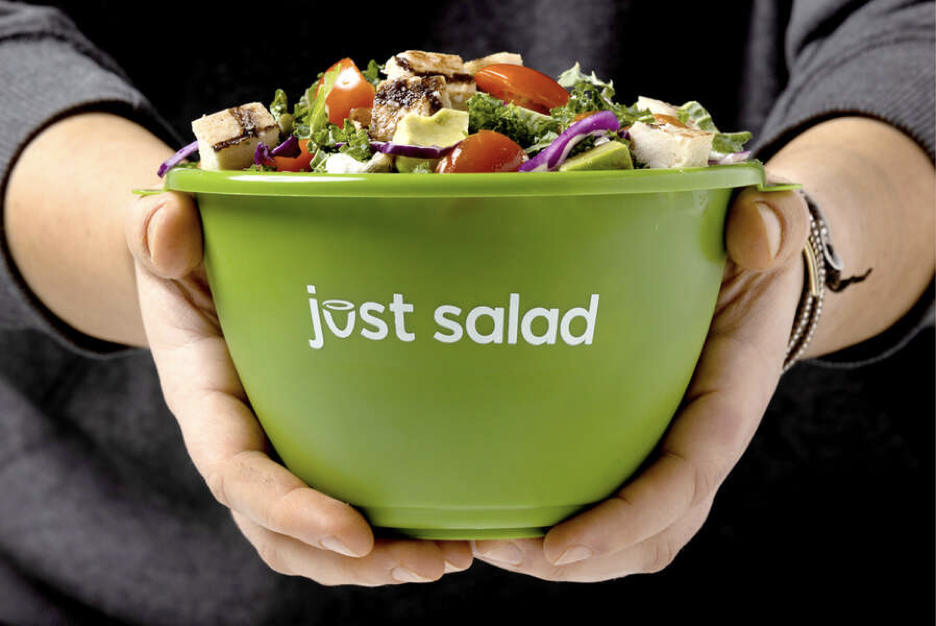
START WITH GREENS. All of the go-to greens—arugula, spinach, kale, romaine, iceberg, red leaf, and mesclun—contribute earthiness, nutrients, and crunch. For crunch, start with iceberg and romaine, then add ribbons of lacinato kale for good measure. If you like zing, add arugula.
And explore the plant color wheel—go for some reddish-purple with slivered red cabbage. Besides the lovely color, it also adds to the crunch factor.
When greens shopping, avoid any with browning, bruising, yellowing, or with condensation in the bag or box. Moisture in the package means the greens inside will wilt soon, if they haven’t already.
Once home, wash them well. Unless, that is, it’s a box of loose-leaf lettuce that’s stamped “triple-washed.” You can believe the message: Don’t bother to re-wash because the leaves are thin and if washed again, they’ll absorb water and wilt.
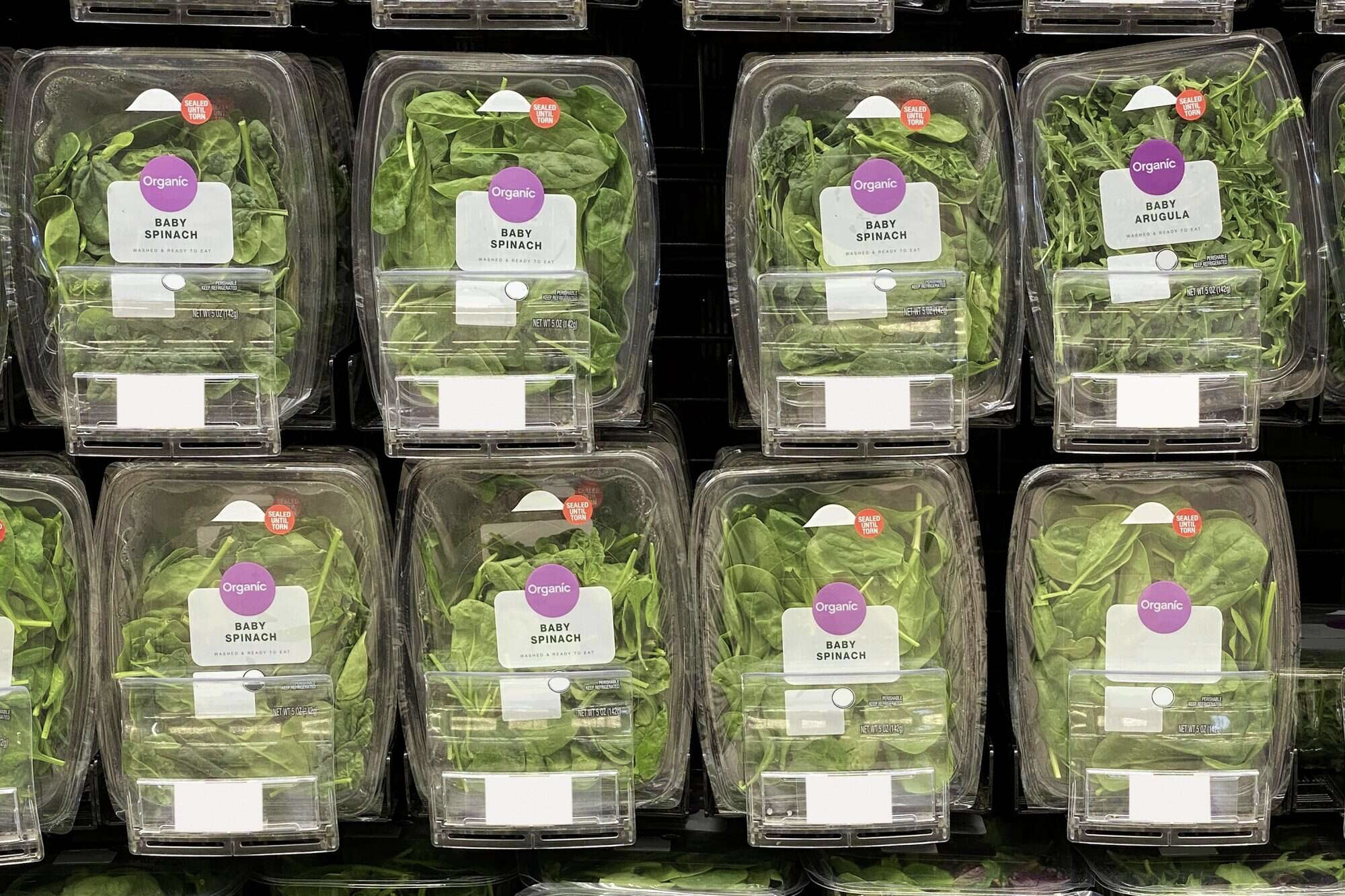
But for bunched lettuces, do wash in a huge bowl or your sink with cold water. Tear the leaves, swish them in the water, then let them rest for a few minutes to allow settling of any released dirt. Place them into a salad spinner. If the water is really dirty, repeat the process.
Dry washed lettuce WELL by including a paper towel with the leaves. Take this seriously. For chopping, lettuce has to be totally dry or your salad will be more like a greens soup.
Next, heap a salad-eating bowl to the brim with greens. (Trust this step; the greens will shrink when chopped and dressed.) Then transfer them to a big mixing bowl, which is where you’ll build your meal.
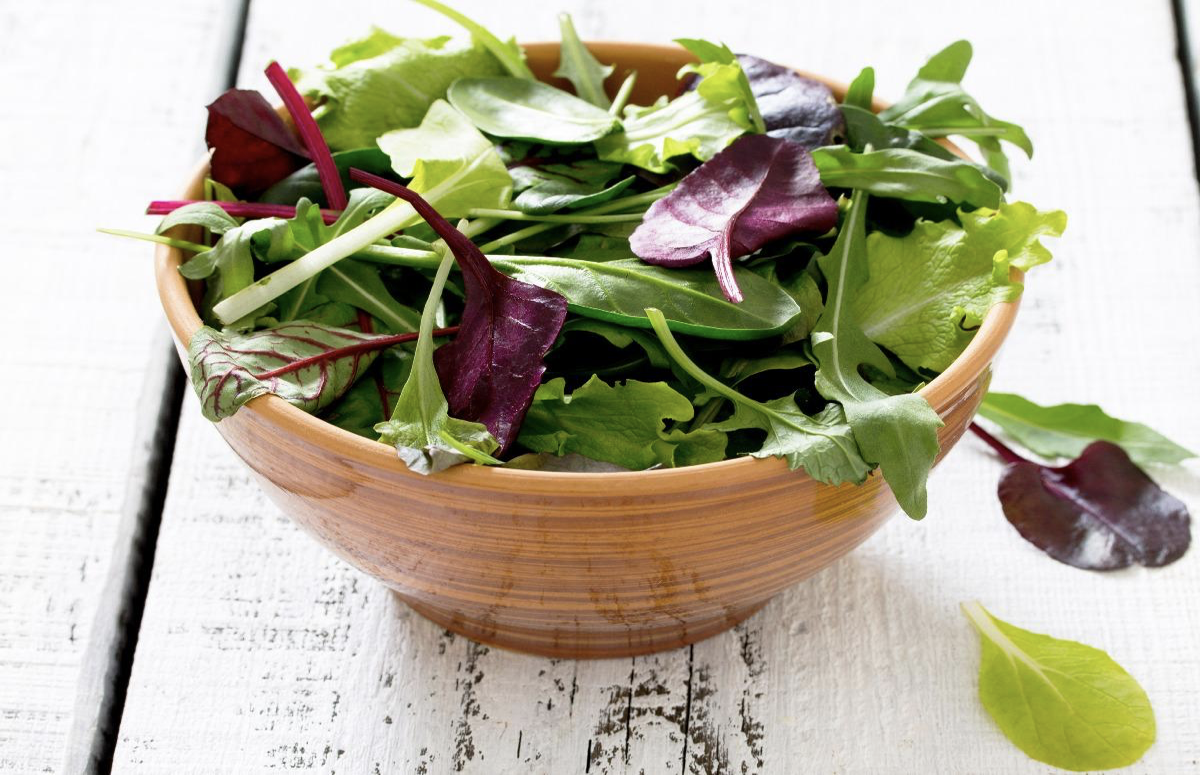
ADD FRUITS AND/OR VEGGIES. With a theme in mind, include salad basics (grated carrots, sweet cherry tomatoes, and creamy avocado), then get creative. Consider adding cooked vegetables (roasted broccoli, steamed winter squash, and roasted tomatoes are winners) into the mix. The goal is to build with unity.
To keep salad unity, “theme out” every salad. For instance, consider a Mexican theme: After the green leaf-kale-red cabbage mix, add chopped yellow peppers, minced jalapeños, and cubes of cooked red kuri squash.
Also remember water content of your veggie add-ins. Roasted red peppers, green peppers, fresh oranges, and roasted tomatoes can all become soupy when chopped, so opt for just one or two such ingredients. For amounts, use 2 tablespoons to ¾ cup of an ingredient, depending on personal taste and how strong the flavor—the more flavorful, the less you need. In other words, opt for pinches of jalapeños and handfuls of cucumbers.
GRAINS AND NUTS ARE NEXT. Cooked grains add bulk and ward off post-salad hunger. Cooked, cooled wheat berries are a favorite for their nutrient richness and the bubble-like burst you get when you bite into them. Quinoa is also a good choice (¼ cup of cooked quinoa is perfect). Prep grains in advance, store in the fridge, and then dole portions out cold.
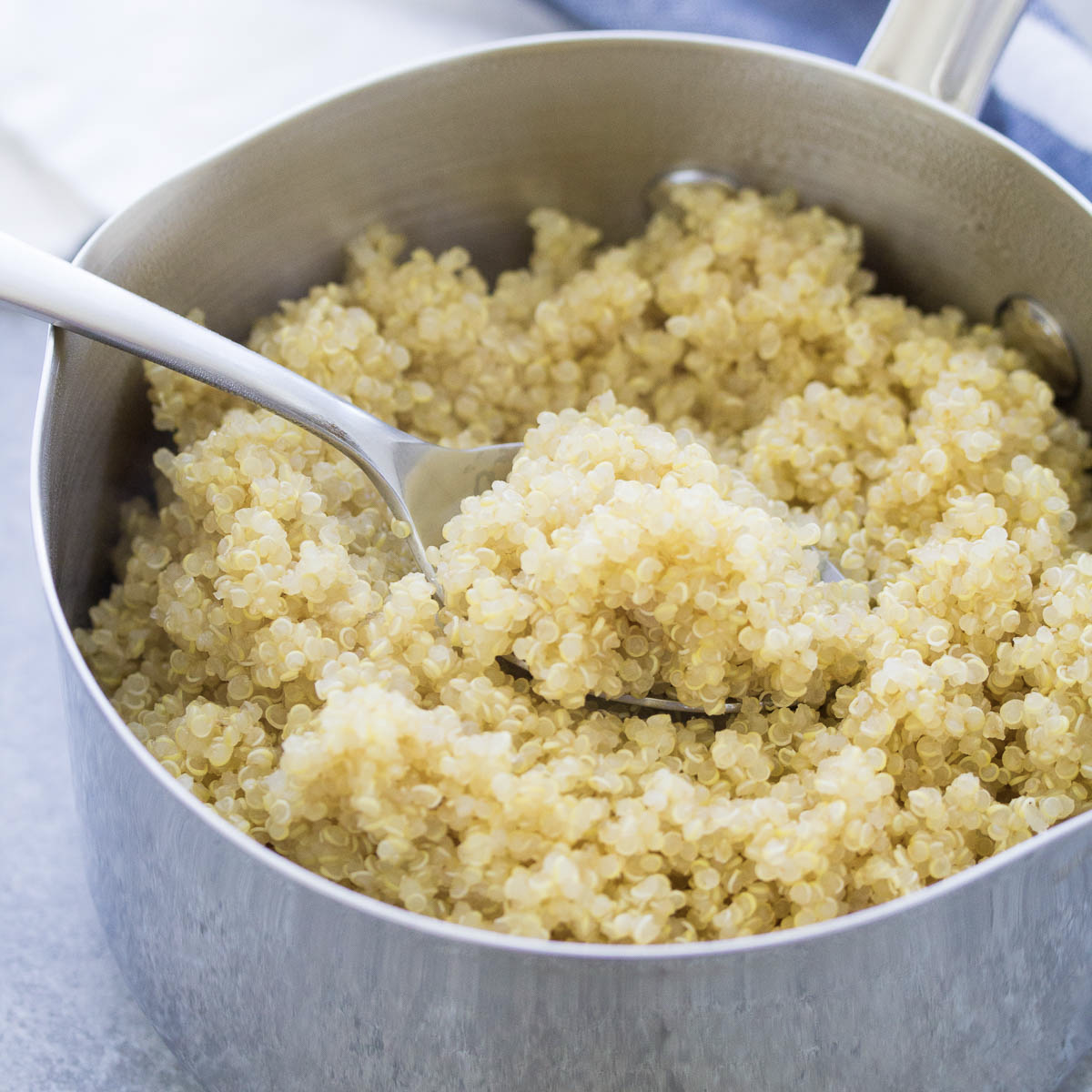
Nuts contribute protein, texture and great taste (especially when toasted). Just remember to keep them on theme. Back to the Mexican theme: pepitas would be an excellent choice.
CHEESE COMES NEXT (if it’s a non-vegan salad). In an antipasti-themed salad, bocconcini rounds out the flavors. Aged or brined cheeses like Parmesan, pecorino, and feta will morph into your dressing in the most extraordinary way, adding saltiness and heft to the entire salad. You don’t need a lot. As with other ingredients, the stronger the flavor, the less you’ll want to use.
PROTEIN FOLLOWS (if it’s a non-vegan or non-vegetarian salad). They tend to anchor a salad (chopped or otherwise). As with grains, it’s good to prep your meat choices in advance. You can season your protein for its theme, but the less distinctively you flavor your meat, the more varied your future salads can be. Store them whole, then cut into bite-sized pieces when you make your salad.
Don’t forget crispy, crumbled bacon or hard-boiled eggs. Do keep in mind, though, that the yolk will break apart and get distributed around your salad.
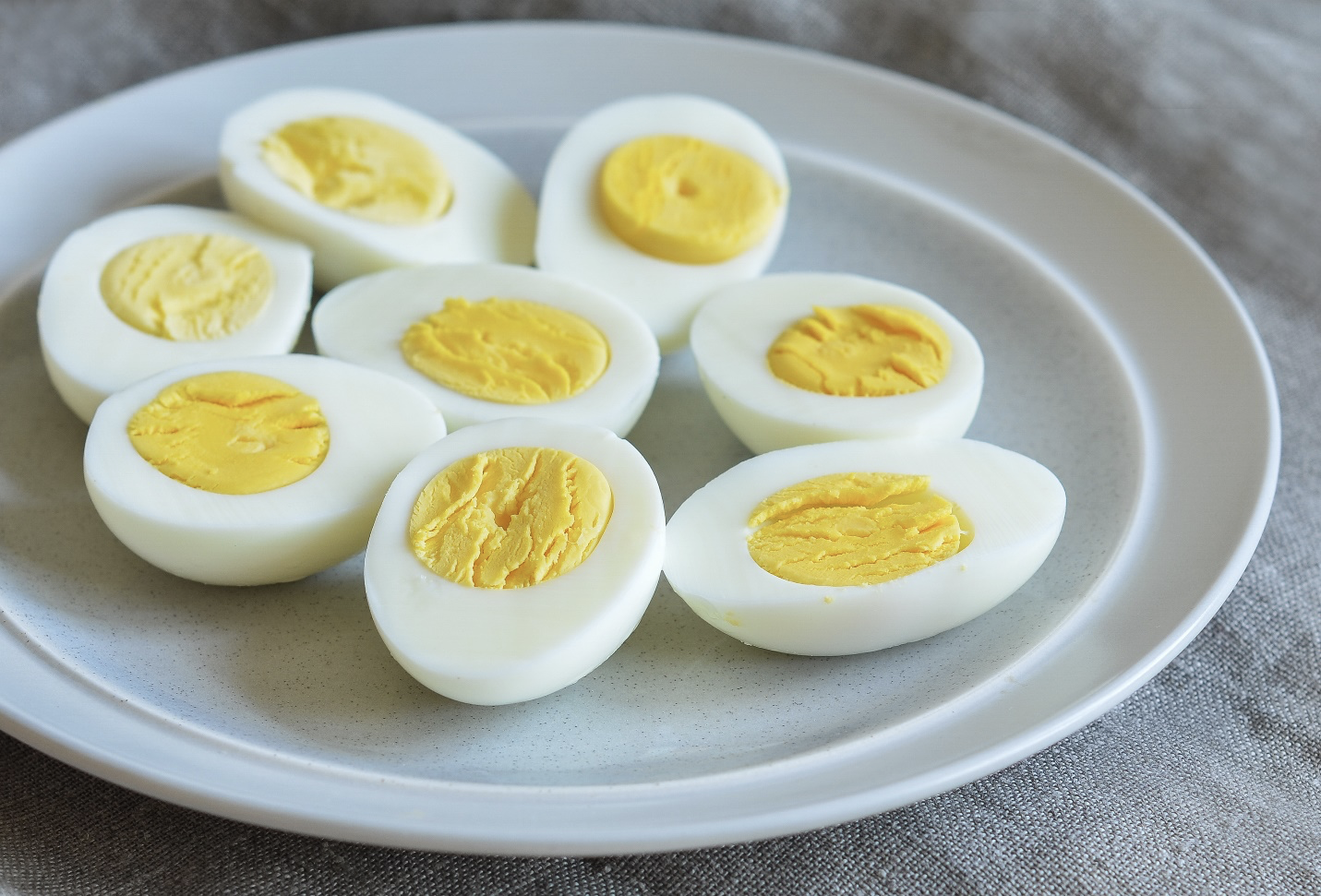
CRUNCHERS BELONG as well. In a chopped salad, you’re building texture layers. You want a crunchy impact. This comes from croutons, tortilla chips, pita chips, or crispy wonton noodles. Crunch is satisfying as well as flavor-contributing.
NOW TO CHOPPING—it’s a technique. With all ingredients in the bowl, you’ll want to dump them out again, this time onto a BIG cutting board. Professional salad makers use a triple-blade mezzaluna (curved knife), which makes quick work of greens, vegetables, cheese, meat, and crunchy bits. When using, glide it gently from side to side over your ingredients, keeping the blade on the board at all times. The pros say, if you’re making noise, you’re not doing it right.
But using a mezzaluna isn’t a necessity. Although messier, a chef’s knife is effective. Here’s how the authors at www.firstwefeast.com say to handle your chef’s knife: “Arrange your greens in a rough rectangle, then use your largest, sharpest knife to cut all the way down to the board. Lift the knife, and cut again in a parallel line about an inch from the first. Repeat until you reach the end of the rectangle.
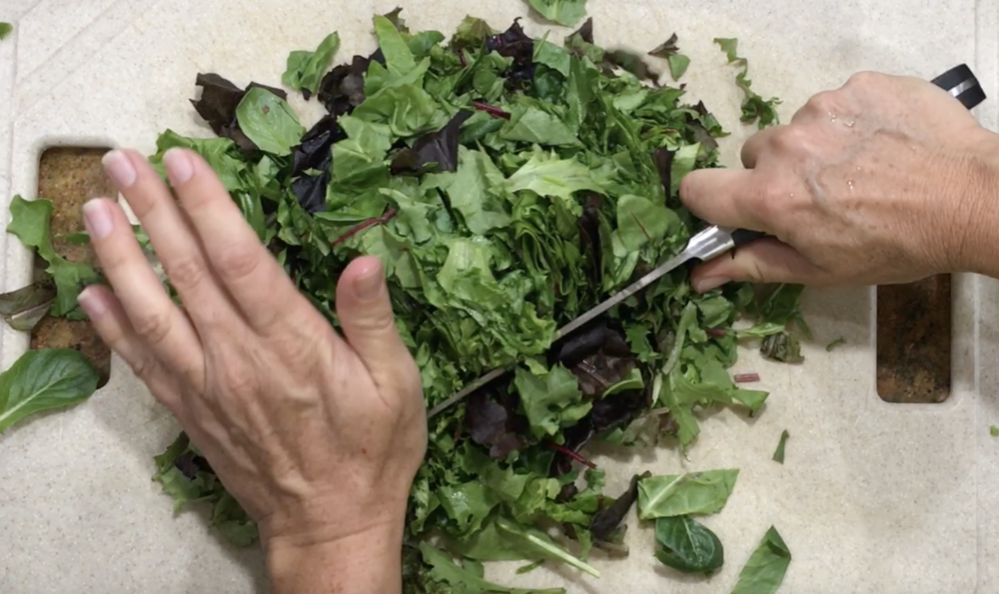
“Rotate the board 90 degrees, then do again. That might be enough chopping, but if you want a finer mince, toss the ingredients to redistribute, then chop in a grid once more. Return to your big mixing bowl.” Overall, how tiny you chop things depends on your taste. It’s about experimenting.
' NOW TIME FOR DRESSING. It sets the salad’s tone. An oil-based vinaigrette keeps the salad light, while a cream-based dressing adds heartiness.
Again, back to a Mexican-themed salad. A creamy chipotle would sparkle. But complicated dressings aren’t needed, unless your salad is plain. A plain salad would do well with a kale pesto vinaigrette or buffalo dressing. But a really good olive oil with a squeeze of fresh lemon with some salt and ground pepper suffices.
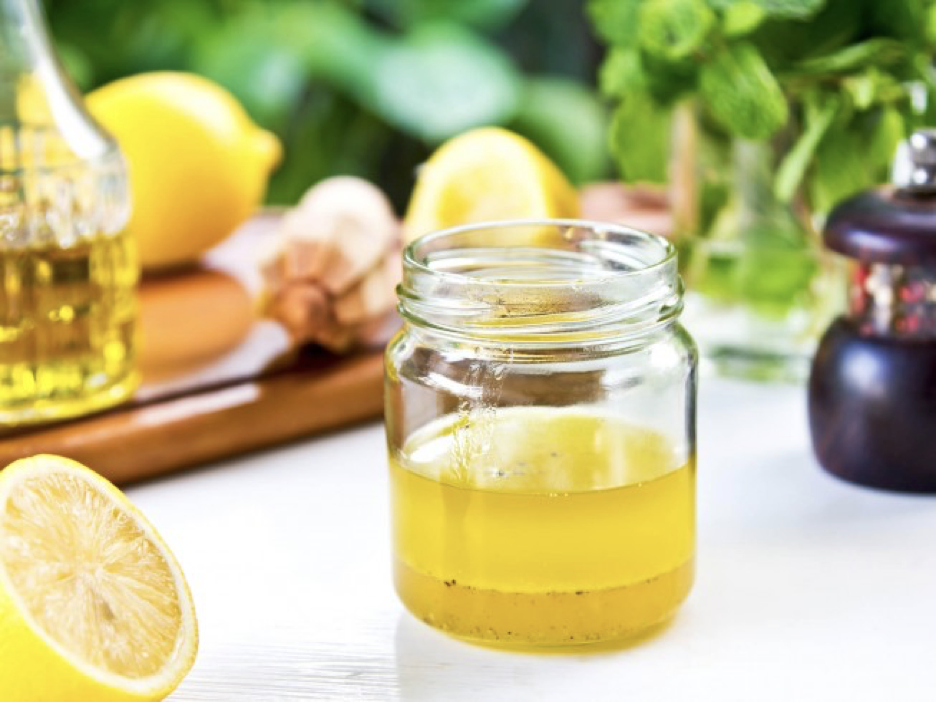
The www.firstwefeast.com folks say “Once chopped and back in the big mixing bowl, spoon or drizzle a little dressing into the salad, starting with just a tablespoon or two. Then, toss with two big spoons or dough scrapers, or—since you’re at home—your very clean hands.
“You want the dressing to coat, not bog the ingredients down. A good rule of thumb? No more than 2 ounces of dressing; more will turn a salad soggy. Taste as you go, adding some salt and pepper to finish.”
Second rule of thumb? Serve salads immediately after tossing.
www.thrillist.com
www.allrecipes.com
www.eatthismuch.com
www.kristineskitchenblog.com
www.onceuponachef.com
www.myfriendmesha.com
www.cdkitchen.com
Here’s how pros at salad shops around the country, and the authors of www.firstwefeast.com, say to build an efficient, delicious chopped salad:

START WITH GREENS. All of the go-to greens—arugula, spinach, kale, romaine, iceberg, red leaf, and mesclun—contribute earthiness, nutrients, and crunch. For crunch, start with iceberg and romaine, then add ribbons of lacinato kale for good measure. If you like zing, add arugula.
And explore the plant color wheel—go for some reddish-purple with slivered red cabbage. Besides the lovely color, it also adds to the crunch factor.
When greens shopping, avoid any with browning, bruising, yellowing, or with condensation in the bag or box. Moisture in the package means the greens inside will wilt soon, if they haven’t already.
Once home, wash them well. Unless, that is, it’s a box of loose-leaf lettuce that’s stamped “triple-washed.” You can believe the message: Don’t bother to re-wash because the leaves are thin and if washed again, they’ll absorb water and wilt.

But for bunched lettuces, do wash in a huge bowl or your sink with cold water. Tear the leaves, swish them in the water, then let them rest for a few minutes to allow settling of any released dirt. Place them into a salad spinner. If the water is really dirty, repeat the process.
Dry washed lettuce WELL by including a paper towel with the leaves. Take this seriously. For chopping, lettuce has to be totally dry or your salad will be more like a greens soup.
Next, heap a salad-eating bowl to the brim with greens. (Trust this step; the greens will shrink when chopped and dressed.) Then transfer them to a big mixing bowl, which is where you’ll build your meal.

ADD FRUITS AND/OR VEGGIES. With a theme in mind, include salad basics (grated carrots, sweet cherry tomatoes, and creamy avocado), then get creative. Consider adding cooked vegetables (roasted broccoli, steamed winter squash, and roasted tomatoes are winners) into the mix. The goal is to build with unity.
To keep salad unity, “theme out” every salad. For instance, consider a Mexican theme: After the green leaf-kale-red cabbage mix, add chopped yellow peppers, minced jalapeños, and cubes of cooked red kuri squash.
Also remember water content of your veggie add-ins. Roasted red peppers, green peppers, fresh oranges, and roasted tomatoes can all become soupy when chopped, so opt for just one or two such ingredients. For amounts, use 2 tablespoons to ¾ cup of an ingredient, depending on personal taste and how strong the flavor—the more flavorful, the less you need. In other words, opt for pinches of jalapeños and handfuls of cucumbers.
GRAINS AND NUTS ARE NEXT. Cooked grains add bulk and ward off post-salad hunger. Cooked, cooled wheat berries are a favorite for their nutrient richness and the bubble-like burst you get when you bite into them. Quinoa is also a good choice (¼ cup of cooked quinoa is perfect). Prep grains in advance, store in the fridge, and then dole portions out cold.

Nuts contribute protein, texture and great taste (especially when toasted). Just remember to keep them on theme. Back to the Mexican theme: pepitas would be an excellent choice.
CHEESE COMES NEXT (if it’s a non-vegan salad). In an antipasti-themed salad, bocconcini rounds out the flavors. Aged or brined cheeses like Parmesan, pecorino, and feta will morph into your dressing in the most extraordinary way, adding saltiness and heft to the entire salad. You don’t need a lot. As with other ingredients, the stronger the flavor, the less you’ll want to use.
PROTEIN FOLLOWS (if it’s a non-vegan or non-vegetarian salad). They tend to anchor a salad (chopped or otherwise). As with grains, it’s good to prep your meat choices in advance. You can season your protein for its theme, but the less distinctively you flavor your meat, the more varied your future salads can be. Store them whole, then cut into bite-sized pieces when you make your salad.
Don’t forget crispy, crumbled bacon or hard-boiled eggs. Do keep in mind, though, that the yolk will break apart and get distributed around your salad.

CRUNCHERS BELONG as well. In a chopped salad, you’re building texture layers. You want a crunchy impact. This comes from croutons, tortilla chips, pita chips, or crispy wonton noodles. Crunch is satisfying as well as flavor-contributing.
NOW TO CHOPPING—it’s a technique. With all ingredients in the bowl, you’ll want to dump them out again, this time onto a BIG cutting board. Professional salad makers use a triple-blade mezzaluna (curved knife), which makes quick work of greens, vegetables, cheese, meat, and crunchy bits. When using, glide it gently from side to side over your ingredients, keeping the blade on the board at all times. The pros say, if you’re making noise, you’re not doing it right.
But using a mezzaluna isn’t a necessity. Although messier, a chef’s knife is effective. Here’s how the authors at www.firstwefeast.com say to handle your chef’s knife: “Arrange your greens in a rough rectangle, then use your largest, sharpest knife to cut all the way down to the board. Lift the knife, and cut again in a parallel line about an inch from the first. Repeat until you reach the end of the rectangle.

“Rotate the board 90 degrees, then do again. That might be enough chopping, but if you want a finer mince, toss the ingredients to redistribute, then chop in a grid once more. Return to your big mixing bowl.” Overall, how tiny you chop things depends on your taste. It’s about experimenting.
' NOW TIME FOR DRESSING. It sets the salad’s tone. An oil-based vinaigrette keeps the salad light, while a cream-based dressing adds heartiness.
Again, back to a Mexican-themed salad. A creamy chipotle would sparkle. But complicated dressings aren’t needed, unless your salad is plain. A plain salad would do well with a kale pesto vinaigrette or buffalo dressing. But a really good olive oil with a squeeze of fresh lemon with some salt and ground pepper suffices.

The www.firstwefeast.com folks say “Once chopped and back in the big mixing bowl, spoon or drizzle a little dressing into the salad, starting with just a tablespoon or two. Then, toss with two big spoons or dough scrapers, or—since you’re at home—your very clean hands.
“You want the dressing to coat, not bog the ingredients down. A good rule of thumb? No more than 2 ounces of dressing; more will turn a salad soggy. Taste as you go, adding some salt and pepper to finish.”
Second rule of thumb? Serve salads immediately after tossing.
Sources:
- www.kristenshane.com
- www.onepercentfortheplanet.org
- www.1greenproduct.wordpress.com
- www.urbanorganicgardener.com
- www.home-storage-solutions-101.com
 Alice Osborne
Alice Osborne
Weekly Newsletter Contributor since 2006
Email the author! alice@dvo.com
